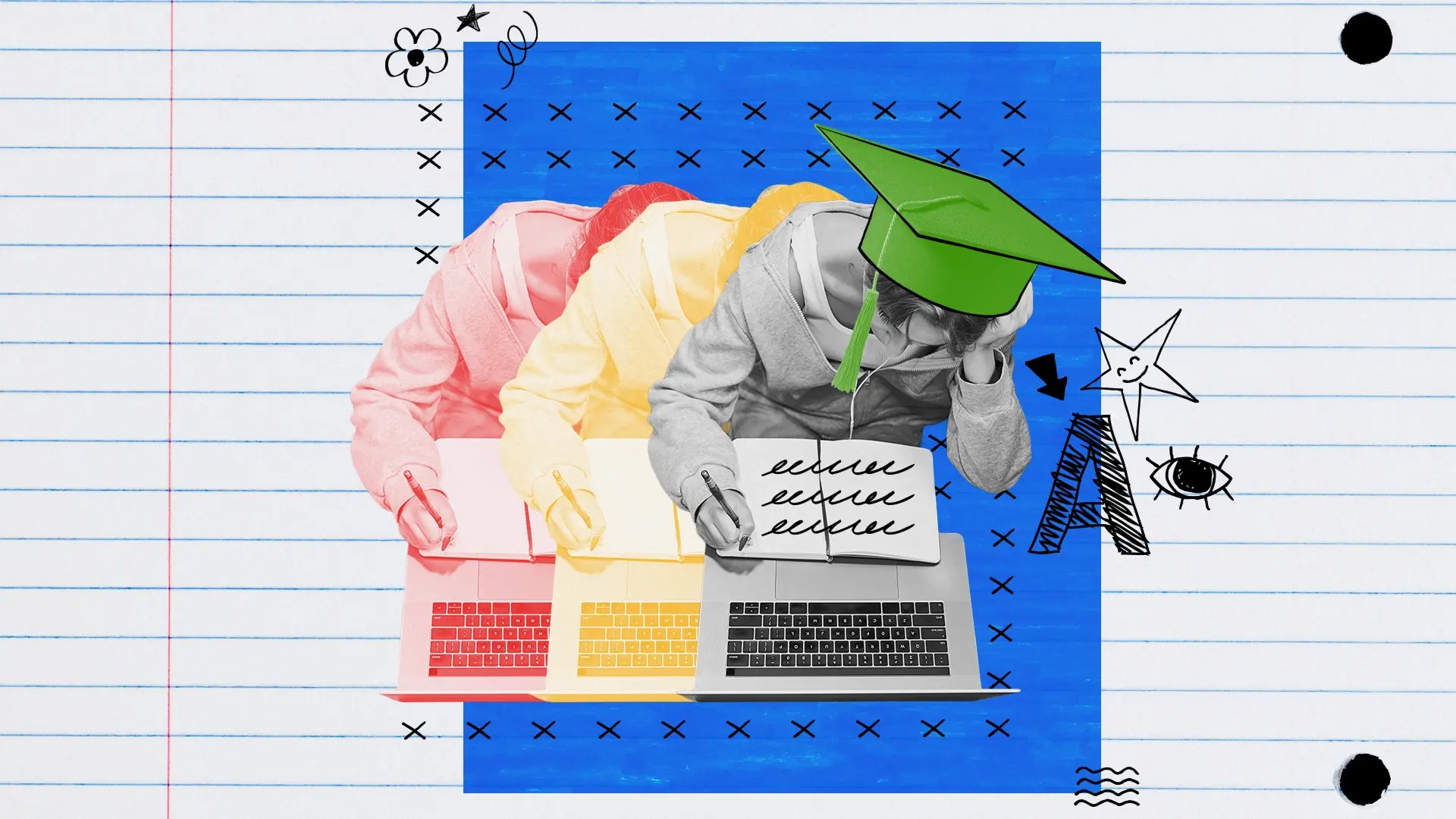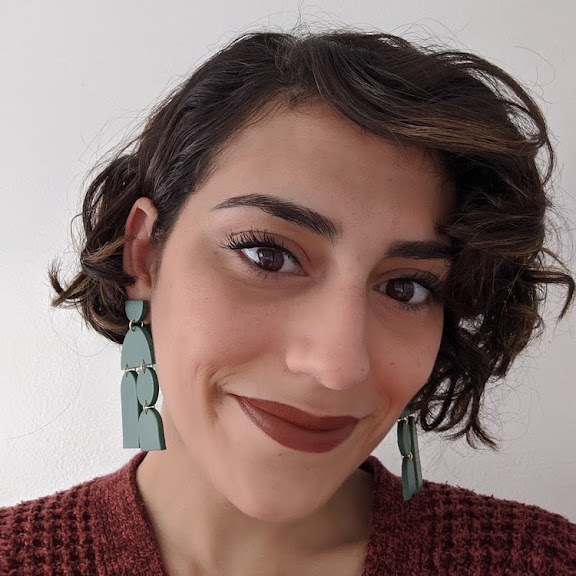Preparing students for the careers of the future

If you live in San Francisco, like I do, October is synonymous with Dreamforce, Salesforce’s annual mega conference that gathers hundreds of thousands of technology professionals—both in-person and online—to hear about the latest advances in AI. At IDEO’s Play Lab, Dreamforce serves as a reminder of how quickly technology evolves and shapes the world our kids are living in. It prompts us to consider what’s next for people, especially young learners growing up in an AI-shaped world, and how play can serve as a powerful tool for tackling complex, often intimidating challenges with curiosity and creativity.
So, when I learned that IDEO was partnering with Salesforce on a student-focused event ahead of this year’s Dreamforce, I jumped at the chance to speak with Dr. Ron C. Smith, Vice President of Philanthropy at Salesforce. The lifelong educator and Bay Area native leads Salesforce’s global education philanthropy team, directing millions of dollars in strategic philanthropic investments to build AI literacy through public school education around the US. While some worry that AI will replace jobs, Smith is an optimist; he sees AI’s potential to unlock new interests and career opportunities. His team’s role? Preparing today’s young people to be educated and ethical AI consumers and creators so they can step into their still-being-imagined future careers—and training the adults who teach them along the way. I spoke with Dr. Smith about how to help young people thrive in a future that’s still taking shape, and why optimism, access, and play will matter more than ever.
Keren Ruth Wong: You were a former Network Superintendent at Oakland Unified School District and a classroom teacher, and now you’re leading philanthropic giving at one of the world’s largest tech companies. With your background, I imagine you have an interesting perspective on what a valuable partnership with public schools looks like.
Dr. Ron C. Smith: For 20 years, I worked as a teacher, then principal, and then led schools and managed school transformations. Then, eight years ago, I joined Salesforce. At the heart of everything we do at Salesforce are the young people we serve, ages 13 to 22, and the teachers, counselors, principals, and superintendents who work with them.
Technologically speaking, the world we live in has changed so much. And I know it continues to change. We used to have a sense of what tech jobs are out there, but that’s all changing so quickly. I know some students feel discouraged because I often hear, “There aren’t any jobs,” but that’s actually not true. A lot of new and diverse industries are seeking tech talent, including gaming and medical and education technology, among others. On top of that, there’s what AI can offer. These types of jobs are perfect for the young people we work with. They’re not afraid of technology. They understand the concept of working across different learning modalities. People tell kids, “Oh, you have to be a doctor or lawyer,” which are great professions, but there are other paths; they’re just not recognized as careers yet.
For far too long, there has been a strange disconnect. There’s been education on one side, and the workforce on the other. But actually, there’s a through-line from education to training and skill development to a career. When you think about it like that, you can ask how to get the right resources to support that continuum. Our goal at Salesforce is to identify and support nonprofits and educational institutions that serve young people who are furthest from success, empower them, provide career counseling and mentoring, and enable them to navigate society’s uncertainties. Salesforce is not going to solve every problem, but by working with great partners like IDEO and Formula One, among others, who engage and inspire students, we can be stepping stones to change and be part of the overall solution.

Keren Ruth Wong: Salesforce made a very specific choice to focus on AI education grants and AI fluency. What was behind that decision?
Dr. Ron C. Smith: AI has been around for a while, but it has only become a mainstream topic in the last two years. At that time, my team and I took a step back and embarked on a listening tour with our nonprofits and partners. We asked them, “Where do you see your work intersecting with AI now and in the future? What are your needs, and where can we support?” We discovered three things.
One: The nonprofits that focus on work and skills training said, “We need to start training young people earlier.” Two: Our partners in the education system said, “We need more support, more training, and more access for educators helping our young people dream about their future careers.” And three: everyone is preparing our young people for unknown careers. Because at the time—and even now—no one says, “I got an AI job!” What is an AI job, anyway? They’re still being created. So, we were intentional about considering partners that focus on AI literacy and fluency, specifically. That means knowing how to use AI safely and ethically, as well as being able to be an AI creator. Having that concrete baseline gives everyone a fairer starting point.
What we also knew was that we couldn’t wait. Now’s the time to invest, especially for the young people we serve, because if we waited until everybody’s ready and felt great about AI, we’d already be behind the eight ball. The education system works notoriously slowly. It just is what it is. We’re saying: let’s take a chance. What we don’t want is for our partners to wait and stay stagnant, potentially pushing those young people who are already behind further behind as they prepare for their futures. We cannot afford to miss this opportunity to engage, invest, and partner with school systems, nonprofits, and all stakeholders involved in public education.
Keren Ruth Wong: It sounds like co-creation between you, the nonprofits, and the students. You’re deciding and preparing together for whatever the jobs might be, five, 10, or 15 years from now.
Dr. Ron C. Smith: One hundred percent. It’s also about working with school leadership. During our listening tour, we invited superintendents from our partner districts, Oakland and San Francisco, as well as superintendents, CEOs, chancellors, and executive directors from across the country, to share their initial thoughts on the role they saw AI playing in their school systems. Our goal was twofold. We wanted to learn what types of training and skills they needed, so we could find partners that could provide that. Then, we wanted to know how they, as leaders, were building AI into their overall infrastructure. Because it’s one thing for leaders to say they want to do something. It’s another if they make AI part of their overall goal, mission, and strategic plan.

Keren Ruth Wong: As a former teacher, you were in the classroom when laptops, smart boards, and other technologies were introduced. What makes AI feel different—if it does—than any other wave of classroom technology?
Dr. Ron C. Smith: I mean, I started in the classroom with chalk. There are young people who’ve never touched chalk!
Computers, the internet, interactive smart boards: they’re all tools. They’re about accessing information. The thing that’s different about AI is that it’s interactive and personalized. You can ask deep questions, have a conversation, and get information about something that’s specifically for you, not just “What’s the capital of Montana?” When you’re talking to Claude, Perplexity, or Gemini, it’s as if you’re talking to a friend. It feels more personal and intimate—less like a tool and more like a partner or assistant. And it’s just getting stronger and wiser because it has more information. The better the questions asked of it, the more meaningful the partnership that can be developed between the AI and the human, which is key. I keep hearing this phrase, “It’s not AI leading humans to an answer, it’s humans leading AI to an answer.” We need to help young people develop the skills to ask better, deeper questions.
Keren Ruth Wong: What role does critical thinking play in helping students have intelligible, meaningful conversations with AI?
Dr. Ron C. Smith: When you think about reading and writing, you’re using critical skills like inference, drawing conclusions, and summarizing. Those same skills are needed when working with AI. Asking AI a simple question can get you basic information. That’s level one. What you can get by Googling. If you want to go to level three, four, or five—really go deep—you have to be able to summarize, draw an inference from the answer, rephrase, and ask it to try it another way.
I recall writing my dissertation. My editor said, “Ron, remember, it goes: good, crap, good, crap, good, crap. The second you realize every other sentence or thought is not good, you’re going to get better.” It’s the same with asking AI questions. The more you engage, the better questions you learn to ask, and the more you start to process what your own ideas are. The young people in the future who can ask the right questions will get ahead faster, and likely stay ahead of those who simply tell AI, “Find me the best restaurant.”
Keren Ruth Wong: Tech is moving so quickly. It feels like the conversation is more technology-led and technology-driven, rather than human-centered. What keeps you optimistic these days?
Dr. Ron C. Smith: For me, it’s humans and technology working together. It’s not a war game! It’s the next evolution of a technology that’s been around for a while. We can’t be afraid of change.
At the same time—and this is the part we must take to heart—if those who are furthest from success don’t have access to the same tools of change, the gaps that already exist will become chasms. These kids will be left behind and never catch up. And that’s something that we, as a society, should not let happen. We should be pushing everyone forward.

Keren Ruth Wong: It’s heartening to hear that the conversations you’re having with different stakeholders in the education system are informing where Salesforce grant dollars go, eventually impacting what jobs are created and what the future looks like.
Dr. Ron C. Smith: Look, my team is amazing. We all come to our work with deep knowledge and experience. Despite this, we believe we should never tell those who are part of the education system what to do. They should tell us what they want, and then we need to agree on how to support that. If we go in with an idea, saying, “This is what’s gonna work,” most nonprofits or education systems that are starving for resources will say yes to the money, then change the idea to meet their needs. A better, more effective path is to say, “Let’s partner. Come up with an idea that aligns with both our strategies and goals.” Now, you’re building together.
Keren Ruth Wong: Are there any programs or grantees that you’re particularly excited about?
Dr. Ron C. Smith: Yes! aiEDU will be leading one of the AI sessions for the students we’ll be hosting at IDEO. They’re an amazing group. Not only do they offer AI literacy training for young people, but they also train and empower educators and school leaders to use AI tools. They understand that having a strong pedagogy to dive deep into the tools is different than using them. Having that back and forth is awesome.
Another group that will be part of our IDEO event is the Hidden Genius Project, based in Oakland. What we like about them is that they engage in a lot of hands-on learning with computers, 3D printing, and other technologies. They’re trying to infuse AI into all of their work.
Those are just two of our high-quality partners. There are so many more.
Keren Ruth Wong: It’s been such a pleasure speaking with you. Any final thoughts?
Dr. Ron C. Smith: This sounds like the start of a Star Trek episode, but we cannot be afraid of the future. Let’s play together, work together, and figure out how to drive change for those who are in greatest need.
Looking to use AI to shape the future of work and learning? Get in touch. We'd love to help.


Get in touch






